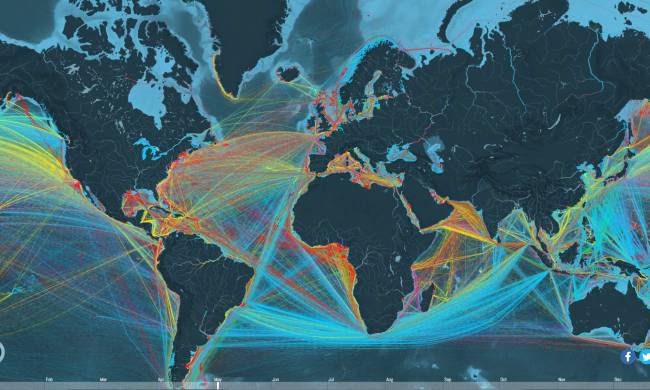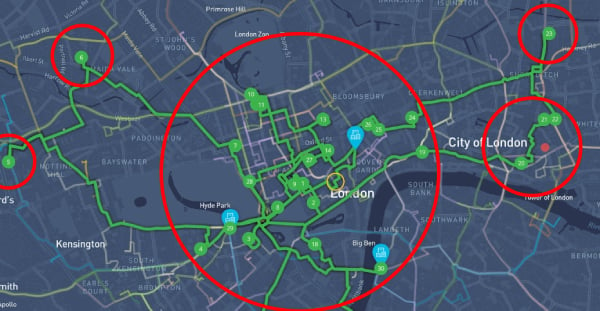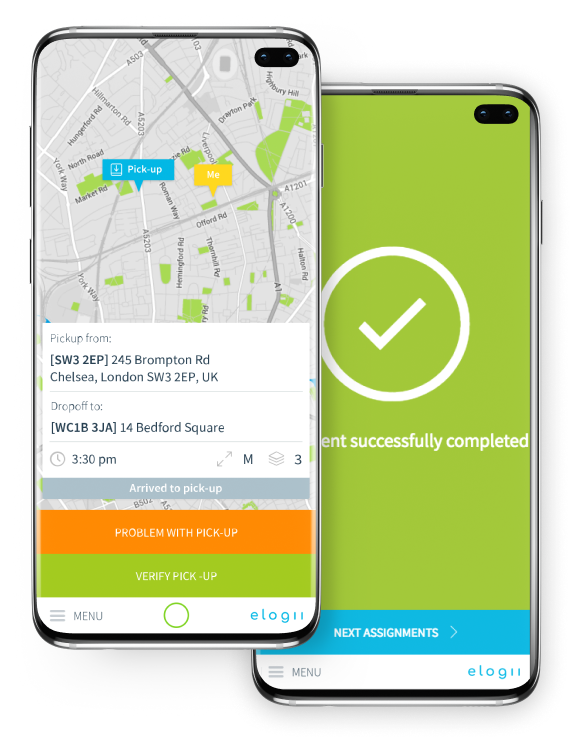How to Avoid Tolls [Google Maps, Alternate Routes + MORE]
Learn how to avoid tolls with Google Maps step by step. And then see how you can increase route efficiency beyond tolls with route optimization...
Home > Blog > 7 Essential Components of a Route Optimization Solution
Route OptimizationLooking for a route optimization solution for your business? Here are 7 essential components you mustn’t overlook if you want the best route planner.
Today, we’ll show you seven essential components every route optimization solution should have.
We’ll also cover the basics like:
So, if you want to know how to map efficient routes, plan better delivery schedules, cut costs, you’ll enjoy this article. And how it helps you choose the perfect solution for your business.
Let’s get started.
Route optimization is a type of route planning. It’s the process of finding the most efficient routes between multiple stops on the map.

But it’s also so much more than that.
Route optimization is an umbrella term that describes the planning of efficient routes across use-cases and industries. All of those meanings involve some type of vehicle and its journey from destination to destination.
For example, you can use route optimization to determine the best driving paths for cars, vans, and trucks. But it’s also used for planning shipping lanes, as well as flight paths.
A preview of global shipping lanes:

All companies rely on route optimization to transport goods, services, or people from one place to another, regardless of their industry.
Today, we’ll focus on route optimization for vehicles on the road. And use-cases that involve the delivery of goods and services, from grocery delivery and retail to 3PL and efficient field service management.
Route planning can be route optimization. And route optimization is route planning. But there is a difference between route planning and route optimization.
Typically, standard route planning solutions rely on distance as the main parameter for determining the best route. In other words, the shortest path from point A to point B to point C…
Route optimization lets you plan efficient routes that depend on several different factors besides distance, such as time, speed, cost, and fuel consumption. But also other parameters that affect its efficiency, like:
When it comes to delivery management, route optimization includes even more parameters like:
Based on all of the factors involved, it stands to reason that it’s difficult to optimize routes by hand.
If you’re manually planning routes for one or two vehicles with a few stops along the path, you may still rely on pen and paper to complete the task.
But as soon as you increase either one, the variables rise exponentially. And it would take a lot of time and other resources to manually plan optimized routes.
That’s why no one does it anymore. And today, route planners rely almost exclusively on route optimization software.
Route optimization software automates route planning. It lets you automatically plan routes with multiple stops (based on multiple factors) for all of the vehicles and drivers in your fleet.
That allows your route planners to create the most efficient routes for thousands of deliveries and drivers in minutes, rather than days.
But there are other benefits of using route optimization software:
With route optimization software, planners can create more efficient routes by relying on more operational constraints. That can cut drive times by 30%, and significantly improve other key metrics in delivery logistics.
When your drivers use efficient routes to deliver goods or services, your business can:
With less mileage, route optimization software improves the workload balance of your teams.
On the one hand, teams at the office spend less time planning routes. Which frees up their schedules to focus on other key activities.
On the other hand, it takes a lot of the pressure from the drivers who know exactly which route to use. With less focus on where they’re going, drivers can shift their attention to what they are doing. That means fewer mistakes and missed deliveries.
And since they use optimized routes, there’s less frustration for drivers on the road. Which means they can provide a better service experience at the customer’s door.
Regardless of whether you sell services or goods, route optimization software helps you plan better delivery schedules and appointments.
Because you have to include the service or delivery time for each task, you rely on when drivers should reach their destinations just as much as where they should go.
That means you can prioritize orders and create schedules that take into account drive times, delivery or service time at destination, pick-up times, and driver breaks. Which ensures drivers always arrive on time for each appointment or delivery.
Route optimization software has geocoding and vehicle tracking capabilities built-in to the system. These features allow you to monitor vehicles and their performance on the map in real-time.
That makes the software a dynamic solution for field service or delivery management. You can adjust, edit, or modify routes and schedules on the go, and based on new data as you collect it.
Using routing software also affects the experience of your customers. With more efficient routes, you cut delivery times, which allows you to reach more customers faster.
The flexibility of dynamic route planning and route optimization solutions also means you can effectively reach more customers sooner. Since you don’t rely on fixed routes, you can fulfil orders as soon as you receive them.
At the same time, you can allocate as much or as little time at the customer’s door to provide a premium service with each drop-off.
And because you can create delivery notifications and provide delivery tracking links, you can involve customers in the delivery process to ensure drivers never miss a single drop-off.
Route optimization solutions cover a wide range of software, apps, and other digital products. In fact, you can perform route optimization using Google Maps. (Although there are limitations)

In some cases like delivery management software, route optimization is just one software suite in a myriad of different modules.
But what all routing solutions have in common is their ability to automatically plan routes with multiple stops and track performance in real-time, thanks to the system design and geocoding.
According to the developers at Google:
Geocoding is the process of converting addresses (like a street address) into geographic coordinates (like latitude and longitude), which you can use to place markers on a map, or position the map.
All route optimization systems rely on geocoding and various algorithms to calculate routes based on different constraints.
The software inputs these parameters either from system’s data, third-party applications (API integration), or the data that you upload or manually enter.
Most modern route optimization solutions adopt a cloud-first approach to delivery logistics.
Instead of purchasing the license to use the software on-premise, you subscribe to a SaaS provider and their solution. You gain access to an account and use the software from your browser and on any device.
But not all solutions have these features and abilities. So when choosing route optimization software, you’ll have to determine which components you need and which are non-essential.
Still, there are features that all of these solutions have to have. And to help you, here are seven we think are vital:
#1 Uploading task or delivery information
#2 Mapping multiple stops along the route
#3 Include start and end times at destination
#4 Adjust routes and delivery schedules on the go
#5 Fast and efficient route planning
#6 Integration with other apps and systems
#7 Sharing routes with teams and drivers
The best route optimization software enables you to upload tasks, customer, appointment or delivery data in bulk. That includes:
Typically, you can do this either by importing data from a static source like an excel spreadsheet (.csv file) or use APIs to connect it to an order management system.
What’s more, the tool should allow you to view this information across different devices and user accounts, and manually change the data if necessary.
Route optimization software should allow you to add all of the tasks (appointments or deliveries) for a given date.
Based on the number of tasks you import, the system should distribute these tasks among drivers, and automatically create optimal routes and schedules around them.
(Keep in mind that some SaaS providers limit the number of tasks you can add based on what package you subscribe to)
Different industries require different service times on location. The service time of a driver who needs to collect electronic proof of delivery isn’t the same as for a field agent who has to install equipment in the customer’s home.
That’s why route optimization software should allow you to include different start and end times at each destination to account for the various service times on location.
That benefits drivers who can keep planned appointments and deliveries on track. But operation managers and route planners who can schedule them according to the capacity of your fleet.
Here’s our quick guide if you want to learn how to improve last-mile delivery when demand exceeds your capacity.
Deliveries and field service appointments aren’t static activities. Sometimes a customer may not be at home or have to cancel an appointment. Or a driver may encounter longer service or drive time en route from a previous location.
In those situations, dynamic routing software should allow you to adjust and edit routes and delivery schedules on the go.
And in case of cancellations or missed deliveries, you should also be able to add new drop-offs to the route and new deliveries to the schedule.
It goes without saying that route optimization apps and planning using software should be fast. It defeats the purpose if it takes the tool more than a few minutes to calculate the most efficient route for the entire fleet.
Likewise, the routes should be as efficient as possible. Besides incorporating operational parameters, the software should also create routes with a high route density to minimize cost.
Here’s an example of a route with high route density:

Are you manually planning routes? Using different disconnected apps and different software solutions can be as tedious as planning routes by hand. So route optimization software should support integration with other apps and systems.
Typically, the best routing software achieves this with routing API integration. And it can connect with several different apps, from order and inventory management systems to the fleet tracking software of your third-party provider.
Find out everything you need to know about using an internal vs. external delivery fleet.
The route optimization software you choose should have two key components: a dashboard and a driver app.
While the dashboard serves as the main control panel for planning routes and scheduling deliveries, the driver app lets you share that information with teams in the field.

Providing access to real-time routing data to teams and drivers and across their devices raises workload visibility. In turn, it helps you to streamline workflow and communication by minimizing the need for up-to-the-minute updates and reporting.
On the surface level, access to these capabilities gives your delivery or field service teams a powerful tool they can use to automate the route planning process. Not to mention, plan more efficient routes.
Don't take our word for it. We recently analyzed 40K route optimization software reviews. And all of the 7 components that we've mentioned in this article align with our findings.
But that’s just the tip of the iceberg.
To really get to know what route optimization software can do for you and your business, book a demo and see for yourself:

Learn how to avoid tolls with Google Maps step by step. And then see how you can increase route efficiency beyond tolls with route optimization...
This is a guide about how to optimize route planning. If you want to plan efficient routes, spend less time doing it and cut costs, then this is for...
Learn how to plan a route with multiple stops on Google Maps and other tools in 2024. Step-by-step tips to make route planning simple and efficient.
Be the first to know when new articles are released. eLogii has a market-leading blog and resources centre designed specifically to help business across countless distribution and field-services sub sectors worldwide to succeed with actionable content and tips.
